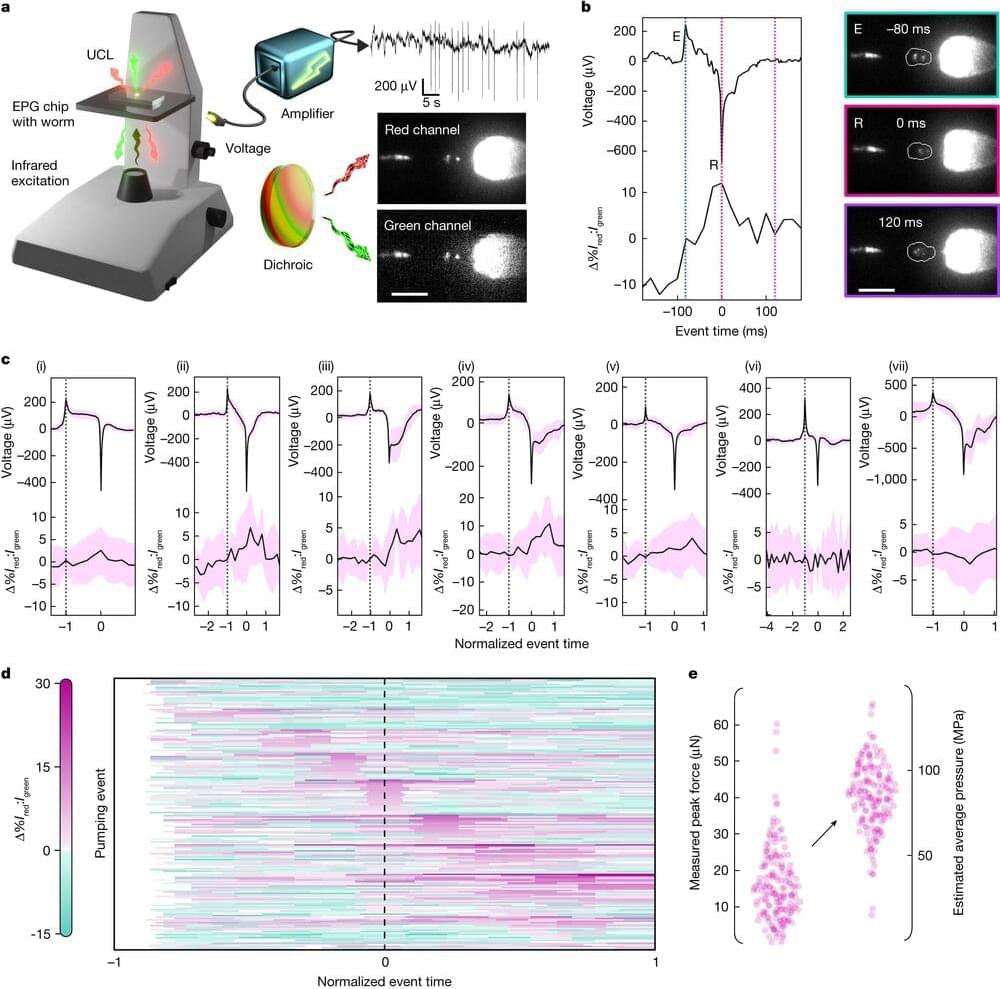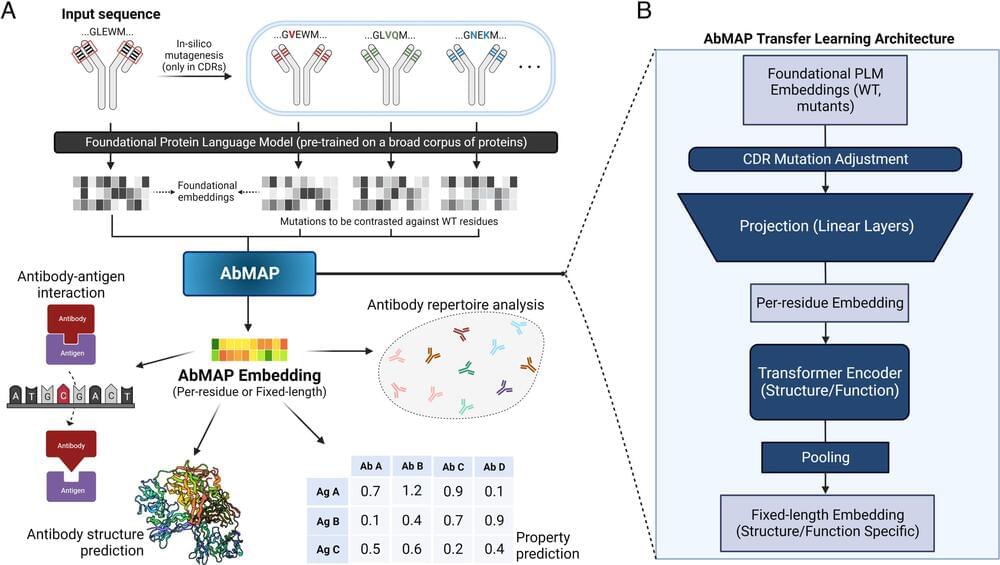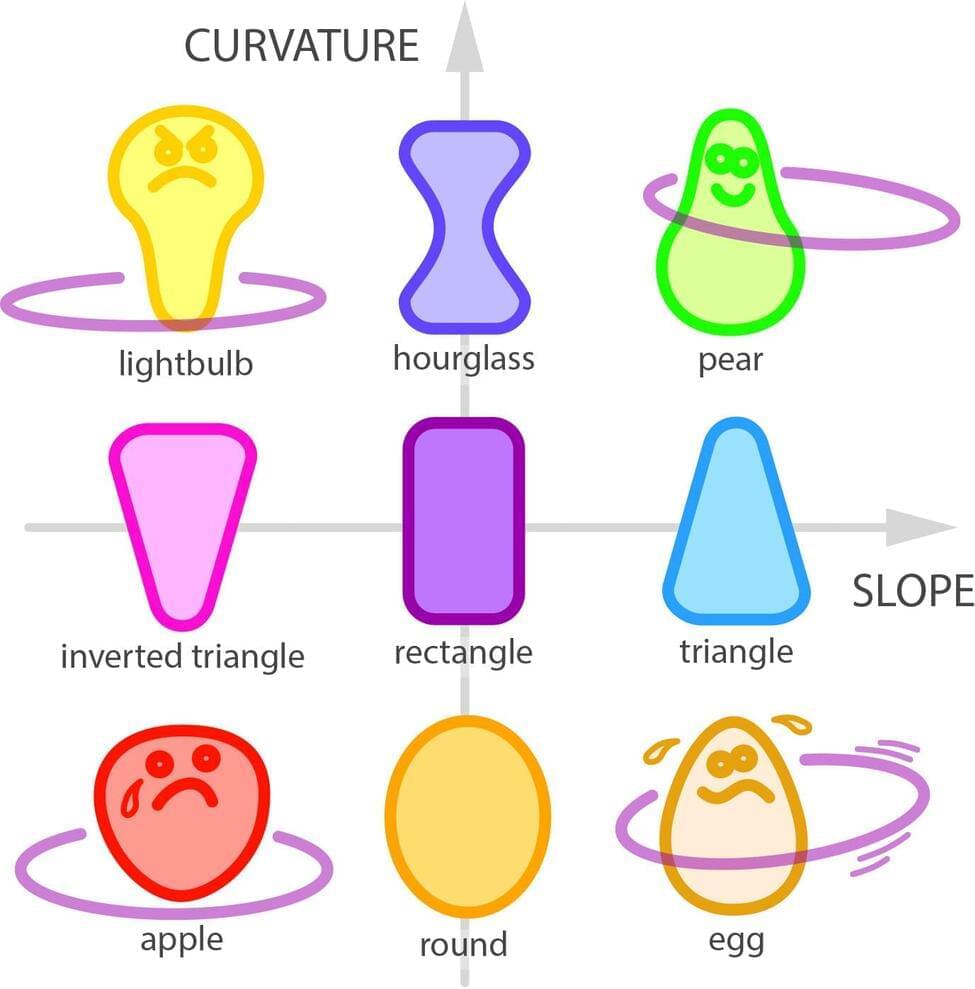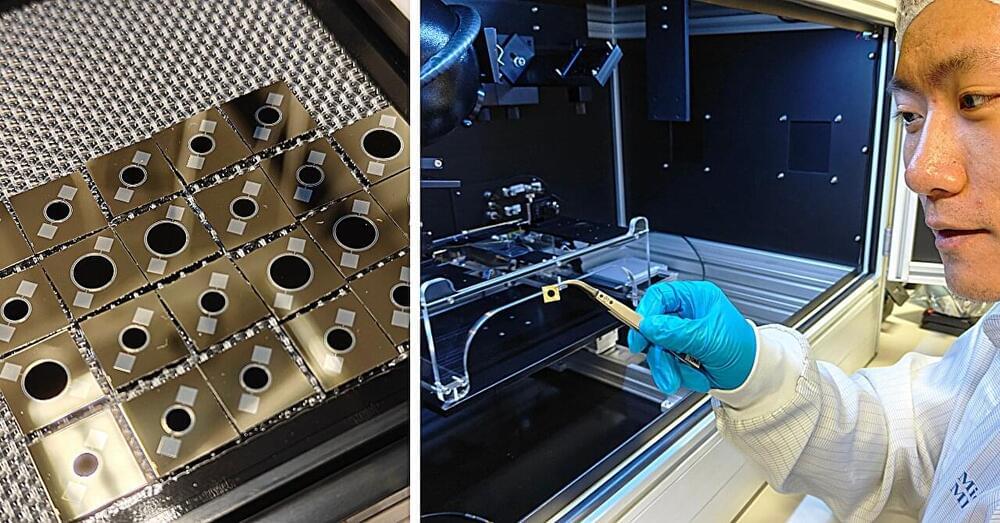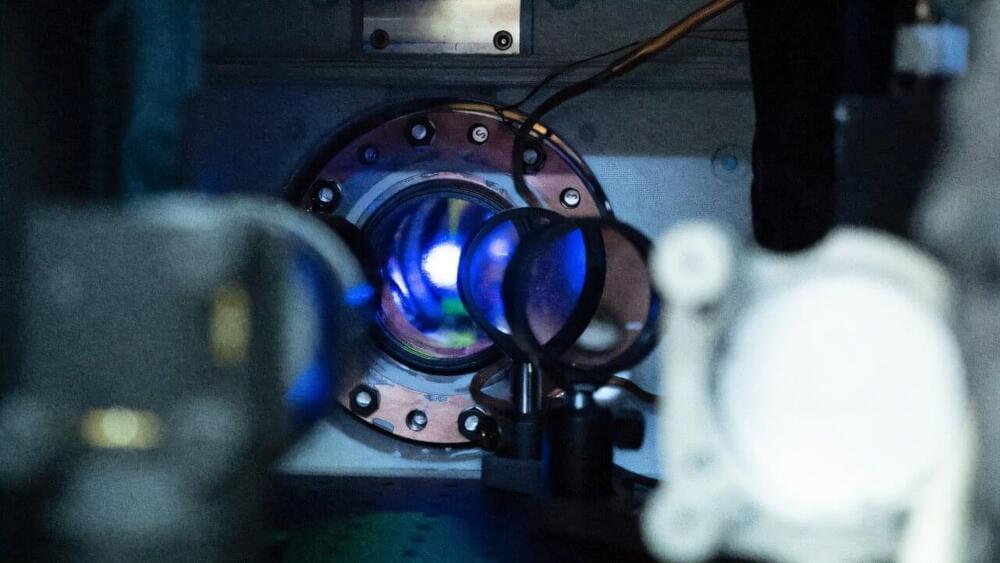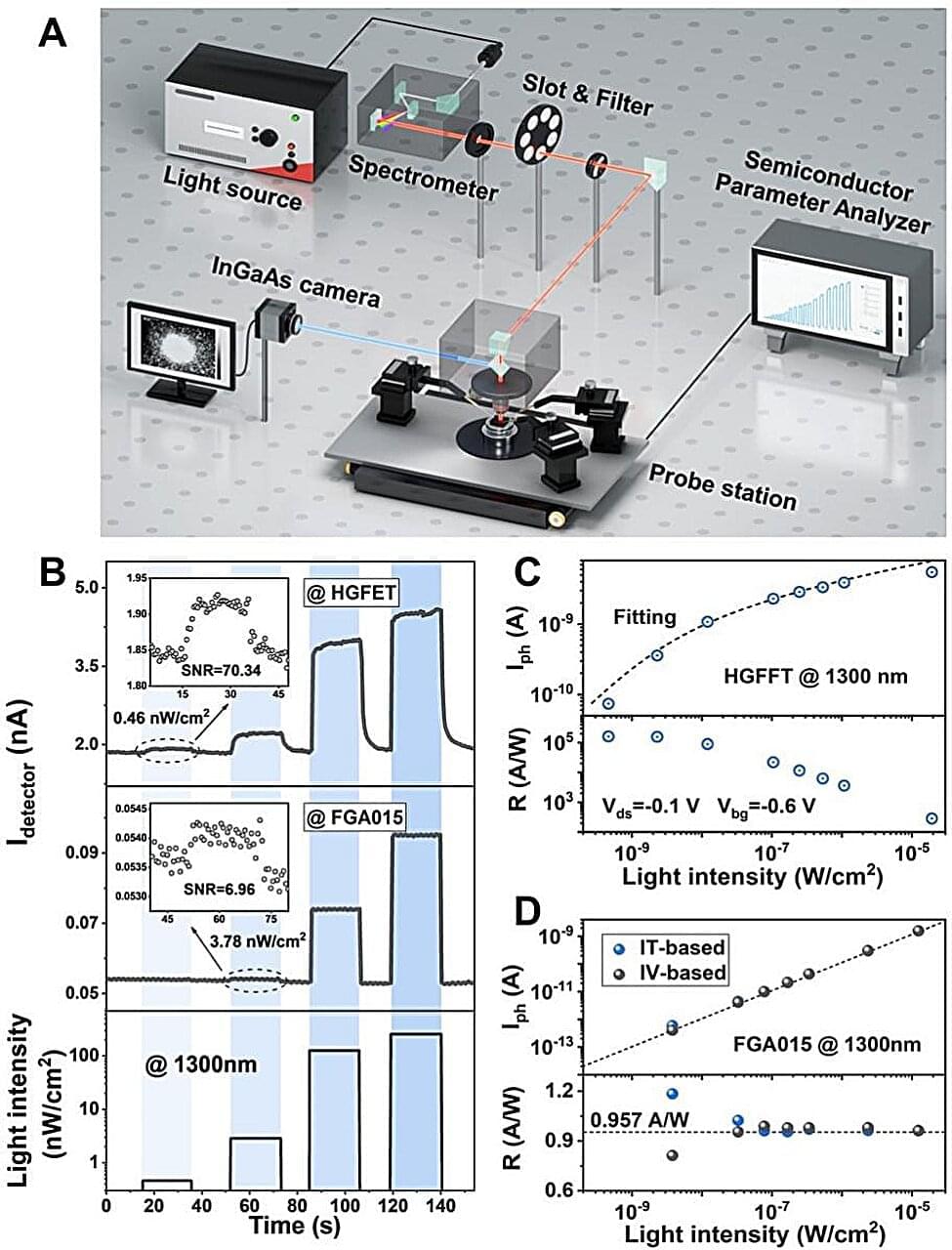Solar storm-driven waves reach Earth’s surface in just 10 minutes, carrying magnetic energy.
A team of materials scientists, physicists, mechanical engineers, and molecular physiologists at Stanford University have developed a nanoparticle technique that can be used to measure force dynamics inside a living creature, such as Caenorhabditis elegans worms biting their food.
In their paper published in the journal Nature, the group describes how they used infrared radiation to excite luminescent nanocrystals in a way that allowed the energy levels of cells inside a C. elegans worm to be measured.
Andries Meijerink, with Utrecht University, has published a News & Views piece in the same journal issue, outlining the work done by the team in California.
Birds are the undisputed champions of epic travel, but they are not the only long-haul fliers. A handful of bats are known to travel thousands of kilometers in continental migrations across North America, Europe, and Africa. The behavior is rare and difficult to observe, which is why long-distance bat migration has remained an enigma.
Now, scientists from the Max Planck Institute of Animal Behavior (MPI-AB) have studied 71 common noctule bats on their spring migration across the European continent, providing a leap in understanding this mysterious behavior. Ultra-lightweight, intelligent sensors attached to bats uncovered a strategy used by the tiny mammals for travel: they surf the warm fronts of storms to fly further with less energy. The study is published in Science.
“The sensor data is amazing,” says first author Edward Hurme, a postdoctoral researcher at MPI-AB and the Cluster of Excellence Collective Behavior at the University of Konstanz. “We don’t just see the path that bats took, we also see what they experienced in the environment as they migrated. It’s this context that gives us insight into the crucial decisions that bats made during their costly and dangerous journeys.”
To overcome that limitation, MIT researchers have developed a computational technique that allows large language models to predict antibody structures more accurately. Their work could enable researchers to sift through millions of possible antibodies to identify those that could be used to treat SARS-CoV-2 and other infectious diseases.
The findings are published in the journal Proceedings of the National Academy of Sciences.
A group of astronomers from numerous institutions have investigated a recently discovered nearby tidal disruption event known as ASASSN-22ci. They detected two luminous flares from this event. The finding was reported in a paper published Dec. 19 on the preprint server arXiv.
Tidal disruption events (TDEs) are astronomical phenomena that occur when a star passes close enough to a supermassive black hole and is pulled apart by the black hole’s tidal forces, causing the process of disruption.
Such tidally disrupted stellar debris starts raining down on the black hole and radiation emerges from the innermost region of accreting debris, which is an indicator of the presence of a TDE. All in all, the debris stream–stream collision causes an energy dissipation, which may lead to the formation of an accretion disk.
Hula hooping is so commonplace that we may overlook some interesting questions it raises: “What keeps a hula hoop up against gravity?” and “Are some body types better for hula hooping than others?” A team of mathematicians explored and answered these questions with findings that also point to new ways to better harness energy and improve robotic positioners.
The results are the first to explain the physics and mathematics of hula hooping.
“We were specifically interested in what kinds of body motions and shapes could successfully hold the hoop up and what physical requirements and restrictions are involved,” explains Leif Ristroph, an associate professor at New York University’s Courant Institute of Mathematical Sciences and the senior author of the paper, which appears in the Proceedings of the National Academy of Sciences.
Detecting infrared light is critical in an enormous range of technologies, from remote controls to autofocus systems to self-driving cars and virtual reality headsets. That means there would be major benefits from improving the efficiency of infrared sensors, such as photodiodes.
Researchers at Aalto University have developed a new type of infrared photodiode that is 35% more responsive at 1.55 µm, the key wavelength for telecommunications, compared to other germanium-based components. Importantly, this new device can be manufactured using current production techniques, making it highly practical for adoption.
“It took us eight years from the idea to proof-of-concept,” says Hele Savin, a professor at Aalto University.
A top-secret lab in the UK is developing the country’s first quantum clock to help the British military boost intelligence and reconnaissance operations, the defense ministry said Thursday.
The clock is so precise that it will lose less than one second over billions of years, “allowing scientists to measure time at an unprecedented scale,” the ministry said in a statement.
“The trialing of this emerging, groundbreaking technology could not only strengthen our operational capability, but also drive progress in industry, bolster our science sector and support high-skilled jobs,” Minister for Defense Procurement Maria Eagle said.
Prof Zhang Zhiyong’s team at Peking University developed a heterojunction-gated field-effect transistor (HGFET) that achieves high sensitivity in short-wave infrared detection, with a recorded specific detectivity above 1014 Jones at 1,300 nm, making it capable of starlight detection. Their research was recently published in the journal Advanced Materials, titled “Opto-Electrical Decoupled Phototransistor for Starlight Detection.”
Highly sensitive shortwave infrared (SWIR) detectors are essential for detecting weak radiation (typically below 10−8 W·Sr−1 ·cm−2 ·µm−1) with high-end passive image sensors. However, mainstream SWIR detection based on epitaxial photodiodes cannot effectively detect ultraweak infrared radiation due to the lack of inherent gain.
Filling this gap, researchers at the Peking University School of Electronics and collaborators have presented a heterojunction-gated field-effect transistor (HGFET) that achieves ultra-high photogain and exceptionally low noise in the short-wavelength infrared (SWIR) region, benefiting from a design that incorporates a comprehensive opto-electric decoupling mechanism.
A previously neglected spin–orbit-coupling effect could be strong enough to engender unconventional superconductivity in certain materials.

